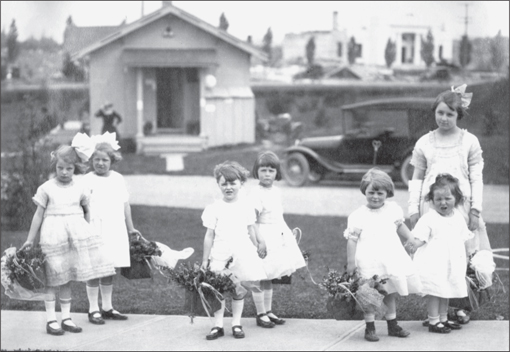
Evergreen Cemetery and Washelli Cemetery were at one time two separate entities. Headed north on the North Trunk Highway, Evergreen Cemetery was on the left side and Washelli Cemetery was on the right side behind the stately poplars now along Aurora Avenue.
At first, the land on the west side of North Trunk Road (Aurora Avenue) was slated to become a housing development; however, residents were not receptive to the notion of driving their automobiles over such a long distance to get to their jobs in Seattle.
While it was a full day’s journey to get to Oak Lake (north of Greenlake) from Seattle and back, David Denny, who owned land by Oak Lake, decided to turn it into a cemetery for the purpose of relocating the remains of his son Jonathan from the old Seattle Cemetery. Jonathan, one of a set of twins, lived only a few hours and died in 1867. Jonathan Denny was first buried in a Seattle churchyard cemetery at Second and Columbia. Since he had to be reburied for the third time, his parents decided to place him on the family land. Thus began Oak Lake Cemetery (later Washelli) in 1884.
In 1891, David and Louisa Denny officially filed a plat of 40 acres as Oak Lake Cemetery. The dedication read, “The object . . . in laying out this tract of land as a cemetery is to furnish a burial place for those who need the same irrespective of nationality, color or previous condition of servitude, where the rich and the poor will be on an equality, where the tax gatherer and the book agent will not ply their vocation.”
Denny’s son Victor inherited the 40-acre tract in 1903. Victor sold the cemetery in 1914 to the American Necropolis Corporation, who renamed it to Washelli, which had been given to the City Cemetery of Seattle but had been disestablished in 1887. Mary B. Leary had suggested the name Washelli, as it was a Makah word for west wind, which is the region of the hereafter. Washelli Cemetery means the cemetery of the land of the hereafter.
In 1919, Evergreen Cemetery was started directly across from Washelli Cemetery. They competed for only a few short years until Evergreen Cemetery bought out the stately Washelli Cemetery in 1922. The deal became final in 1928.
In 1927, the Veterans Memorial Cemetery was started. It contains over 5,000 white marble headstones dating from the Civil War to Vietnam. Two cannons from the famous ship “Old Ironsides,” officially known as the U.S. frigate Constitution, sit in protection. Moved from the Seattle center in 1998 to the Veterans Memorial Cemetery is the Doughboy statue, cast in 1928 by Alonzo Victor Lewis. Memorial Day services have been held in the cemetery since 1927, when thousands of people attended.
In 1972, the Evergreen-Washelli funeral home was started on the eastern side of Aurora—the Washelli side. In 1994, the office needed a larger space and moved to the west side, the Evergreen side of Aurora Avenue where it exists today.

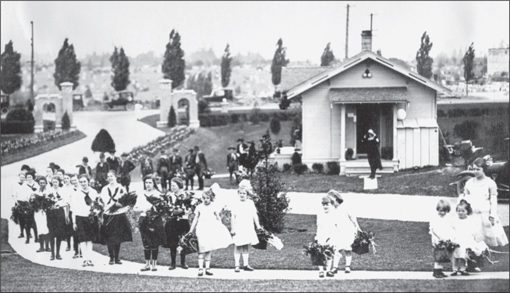
EVERGREEN OFFICE AND GATES. These photographs show an Easter celebration with a view of children in front of the old Evergreen Park office. From Evergreen, one can see the competing Washelli Cemetery across the Old North Trunk Highway. This photograph was taken sometime between 1900 and the 1920s. Perpetual care and permanent ownership were promoted at the Evergreen Cemetery. Purchasers of lots were guaranteed undisturbed “perpetual ownership. A deed was furnished for every lot, and the articles of incorporation of the cemeteries provided a perpetual care fund to care for and maintain the burial parks forever without further expense to the owners.” (Courtesy Evergreen-Washelli Cemetery.)
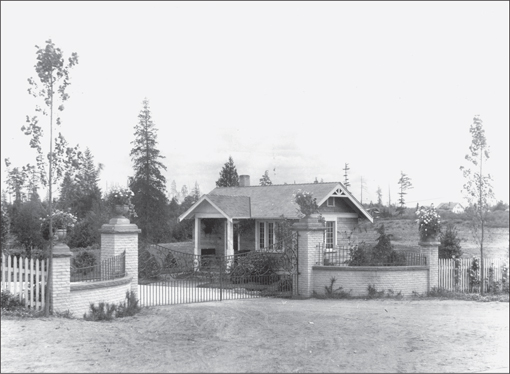
WASHELLI CEMETERY GATEHOUSE. Pictured around 1920 is the old Washelli gatehouse. Note the fine brickwork and wrought iron adorned with flowers in urn pots atop the gates. In the background on the right, old homes adorn the hillsides. (Courtesy Evergreen-Washelli Cemetery.)
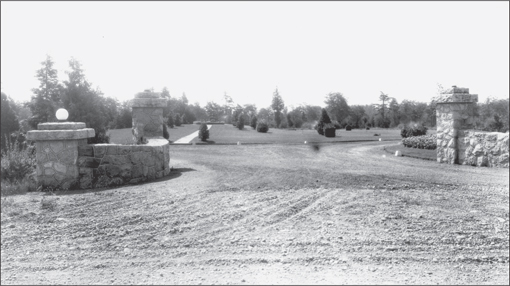
PACIFIC LUTHERAN ENTRANCE. Pictured is the old Pacific Lutheran entrance, as seen from North 115th Place. The open, brick gates were located on the back side of Washelli Cemetery, at North 115th Street and Meridian Avenue North. Evergreen-Washelli now maintains this cemetery as well. (Courtesy Evergreen-Washelli Cemetery.)
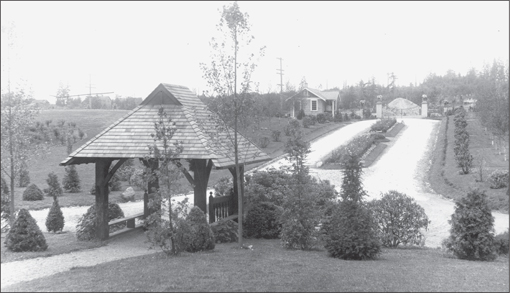
ENTRANCE TO EVERGREEN MEMORIAL PARK. Shown in 1930 is the entrance to Evergreen Memorial Park. Note the brick road, which was the North Trunk Highway (now Aurora Avenue). It was advertised as more than a beautiful park but as an institution where loved ones could be laid to rest in any manner desired—be it earth burial, mausoleum, crypt, columbarium niche, or private vault. (Courtesy Evergreen-Washelli Cemetery.)
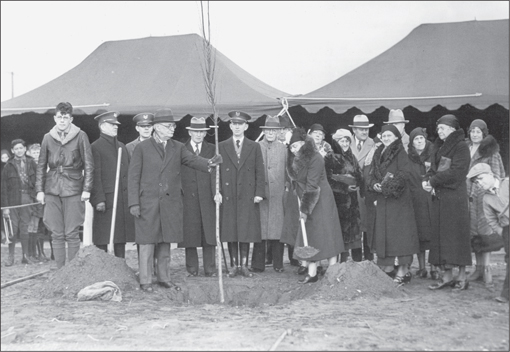
PLANTING THE FIRST POPLAR. This photograph shows the planting of the first poplar tree along Aurora Avenue. Mayor William Hickman Moore is the one holding the poplar. The other people are unidentified. (Courtesy Evergreen-Washelli Cemetery.)
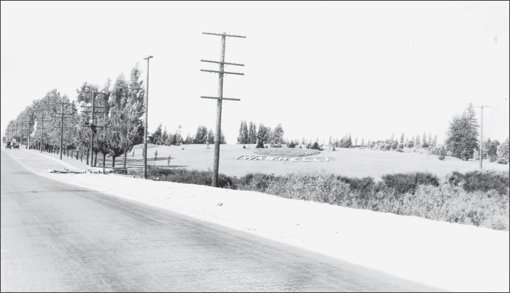
BRICK ROAD, NORTH TRUNK HIGHWAY. Seen from the south along the North Trunk Highway is Washelli Cemetery’s Section M. Note the brick road and the poplars growing beside the road. Visible in the center of the photograph is an elaborate grassy knoll that once spelled out “Washelli.” (Courtesy Evergreen-Washelli Cemetery.)
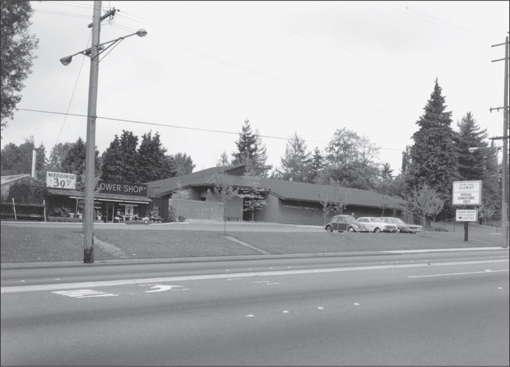
EVERGREEN-WASHELLI CEMETERY OFFICE. There was once a greenhouse behind Evergreen Park, and here you can see the flower shop next to the Evergreen-Washelli Cemetery office. (Courtesy Evergreen-Washelli Cemetery.)
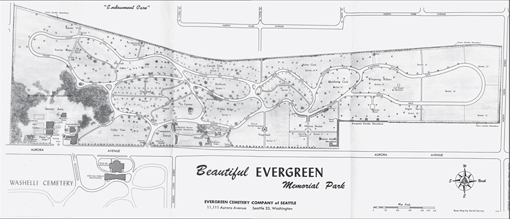
KEEPSAKE MAP OF EVERGREEN CEMETERY. This keepsake map of Evergreen Cemetery Company of Seattle showed “Where Beauty Lives . . . in flowers . . . Symbolic of immortality and love, our Flower Shop will thoughtfully place a bouquet or plant and place it at your memorial weekly or on anniversary dates . . . possibly with lilies for Easter, tulips for Memorial Day and brave holly at Christmastime.” (Courtesy Evergreen-Washelli Cemetery.)
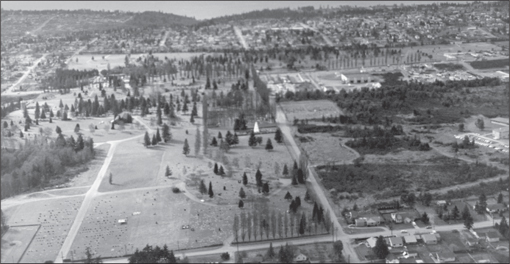
AERIAL VIEW OF EVERGREEN-WASHELLI. This mid-century aerial view of Evergreen-Washelli faces west toward Meridian Avenue North and 115th toward Puget Sound. Pictured in the center is the row of poplar trees lining Aurora Avenue. Northwest Hospital was not yet built. Below left are the Resthaven and Lutheran Cemetery sections. Just south of 115th, the white triangle Russian War Veterans Memorial is visible. (Courtesy Evergreen-Washelli Cemetery.)
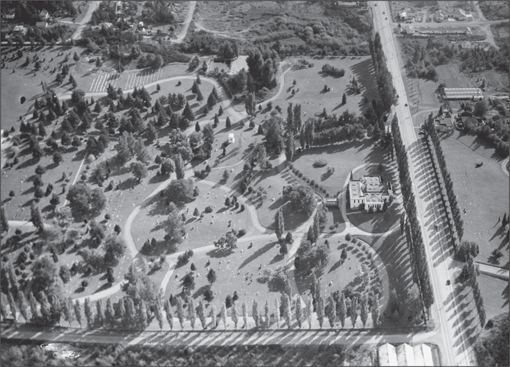
AERIAL VIEW OF WASHELLI CEMETERY. Dated 1940, this aerial view of Washelli Cemetery looks south on Aurora Avenue. Poplar trees line Aurora Avenue, with Washelli Cemetery on the left and Evergreen Cemetery on the right. (Photograph by Loren Smith Photography; courtesy Evergreen-Washelli Cemetery.)
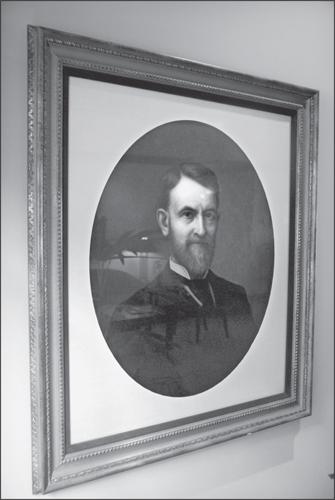
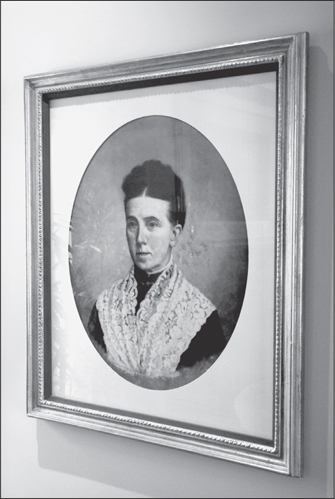
PORTRAITS OF DAVID AND LOUISA DENNY. Hanging in the lobby of Evergreen-Washelli Cemetery are the portraits of David and Louisa Denny, the founders of Seattle and Washelli Cemetery. David and Louisa were the first couple to be married in Seattle, and Louisa was known, for the rose seed she carried across the plains, as the “Sweet Briar Bride.” Descendants of those roses are planted on the Denny family lot. (Courtesy Thomas Cherian Photography.)

MEMORIAL DAY GATHERING AND SYMBOLIC GRAVE. In May during the late 1920s, thousands pay tribute to the nation’s heroes at Washelli Cemetery, pictured above. The annual services are the center of the Northwest Memorial Day observance. Veteran organizations joined in providing a cemetery for the soldiers that died. The symbolic grave is pictured below. In the background is the Washelli mausoleum as viewed from Oak Lane. (Courtesy Evergreen-Washelli Cemetery.)
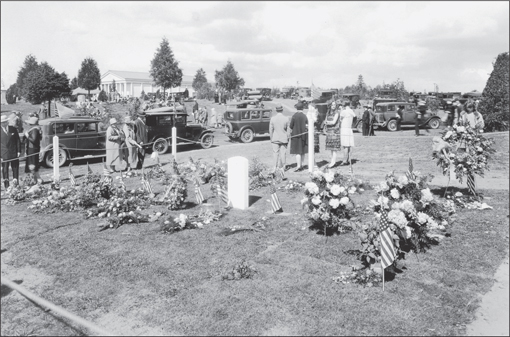
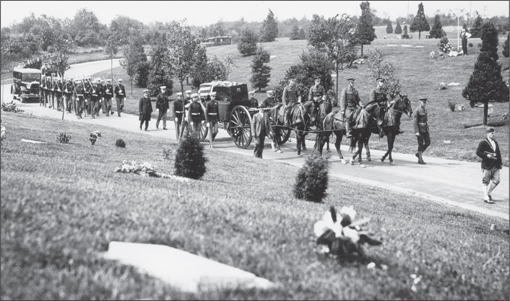
HORSE-DRAWN HEARSE. This 1909 photograph shows a horse-drawn hearse followed by an elaborate parade of mourners. Motorized hearses began to be more widely accepted in the 1920s. (Courtesy Evergreen-Washelli Cemetery.)

EARLY FUNERAL. Pictured around 1920 is an early funeral at Evergreen Memorial Park. Automobiles are parked along the North Trunk Highway, which was at that time a dirt road. The attendees would park and walk up the short hill to the tent and funeral service. (Courtesy Evergreen-Washelli Cemetery.)
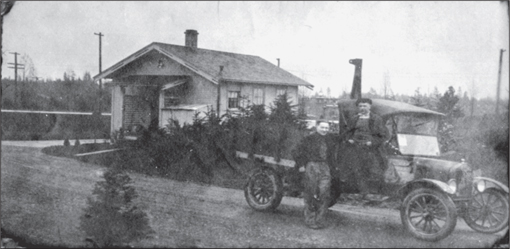
FRED HARLEY. This c. 1920 photograph shows Fred Harley next to an unidentified man standing on the automobile. Behind them is the original Evergreen Cemetery office. In August 1922, Evergreen Cemetery purchased Washelli Cemetery, which included the land as well as “1 Ford truck, 1 horse, office safe and furniture supplies, etc.” (Courtesy Evergreen-Washelli Cemetery.)
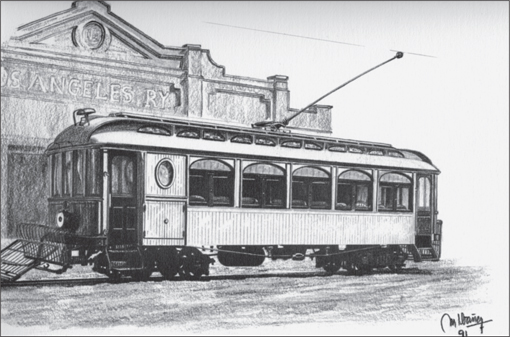
FUNERAL CARS AND INTERURBAN RAIL LINE. Pictured is the Descanso funeral car, similar to what ran to and from Evergreen-Washelli Cemeteries. The funeral car was elegantly furnished with a solid mahogany, polished plank-on-plank burl wood interior outfitted with plush green mohair seats for the bereaved family (wicker for the pallbearers, cigar smokers, and “lesser folk”), black and nickel-plated fittings, dark pinstriped exterior and stained-glass clerestory, and oval windows in green and blue marbleized glass. The loading doors for the casket can be seen under the oval window. The fare for mourners was 50¢ round-trip, and caskets were transported one way for $1. (Courtesy Evergreen-Washelli Cemetery.)
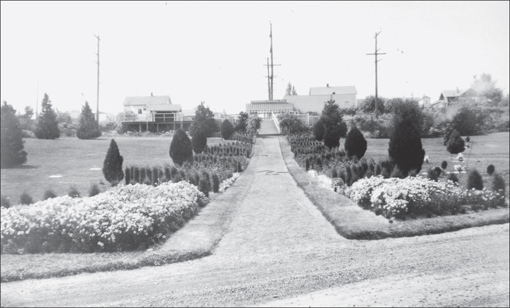
PARKLAND STATION INTERURBAN RAIL LINE. This photograph looks west between Section 6 on the left and Section 14 on the right. In the background is the platform for the interurban rail line at the Parkland Station. Before the automobile became the accepted mode of transportation, the funeral car was an everyday sight at many of the nation’s major cemeteries. The funeral car ran on normal trolley tracks. Evergreen-Washelli was served by the Seattle–Everett Interurban, which traveled on the west edge of Evergreen Cemetery until the late 1930s. The turnstile that regulated foot traffic from the Oaklake Station is still at the walkway through Section 14. (Courtesy Evergreen-Washelli Cemetery.)
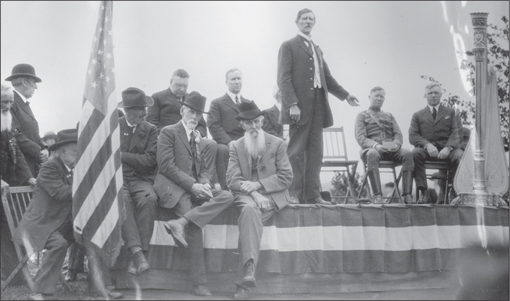
VETERANS DAY, EARLY 20TH CENTURY. Clinton S. Harley, who managed Evergreen Memorial Park, is seated on the right in the photograph above. The image below was taken on the same day. Veterans Day was established to acknowledge all of our veterans and their contributions toward protecting national security, not just those who died. In 1919, Woodrow Wilson commemorated Armistice Day in the United States. On November 11, 1918, the Allied powers signed a cease-fire agreement with Germany. The signing took place at Rethondes, France, and brought World War I to a close. The United States, France, and Great Britain set aside November 11 as Armistice Day. The holiday is recognized as a day of tribute to veterans of both world wars after World War II. (Courtesy Evergreen-Washelli Cemetery.)
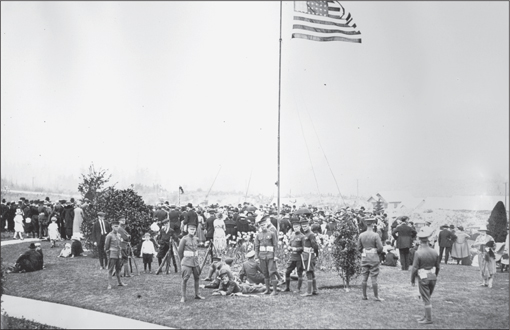
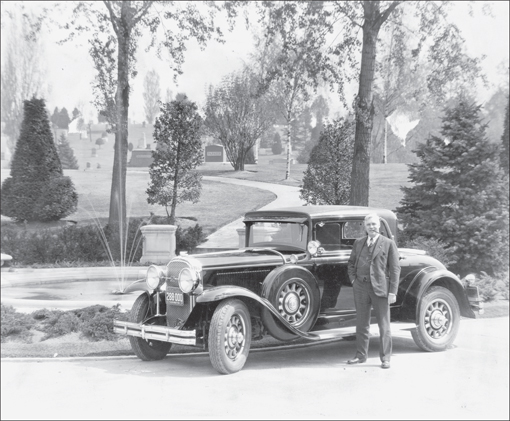
CLINTON S. HARLEY. Harley, pictured standing beside his automobile around 1930 in Washelli Cemetery, was born in Ohio in 1877 and left school at age 13 after his father’s death. As a grocery delivery boy, he earned $2 a week. At the age of 16, he traveled Europe. Returning to America, Harley moved to Colorado, where he wedded Laura Potter. In Cripple Creek, he became a junior bank officer. In 1903, he relocated to Seattle on a direct invitation from Seattle pioneer Dexter Horton. With Horton, Harley helped promote the savings department, which was known as Seafirst Bank and is now known as Bank of America. Next he worked for German-American Mercantile Bank. Relocating to Alaska, he became a manager at a salmon cannery. He moved back to Seattle, where his brother Robert Harley was a founder of Evergreen Cemetery; Harley became the new general manager. He developed and ran Evergreen Cemetery for three and a half decades, shaping Evergreen-Washelli into what it is today. (Courtesy Evergreen-Washelli Cemetery.)
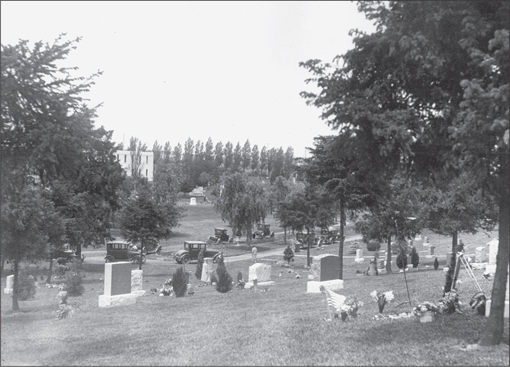
EARLY WASHELLI CEMETERY. This photograph looks northwest from Section 0 at the back of Washelli’s columbarium. Notice the willow (poplars) strip in the background and Washelli Hollow in the immediate foreground. Only a short distance north of Seattle city limits on Woodland Park Avenue, they have splendid transportation facilities, both by Everett Interurban car and automobile bus. (Courtesy Evergreen-Washelli Cemetery.)
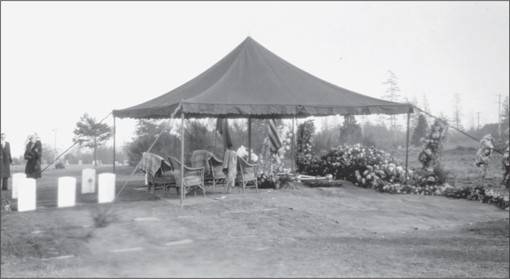
FUNERAL TENT. Pictured sometime around the late 1920s or early 1930s, looking east, is a tent set up for a funeral ceremony. This is in the Veterans Memorial Cemetery, which is part of Washelli Cemetery. (Courtesy Evergreen-Washelli Cemetery.)
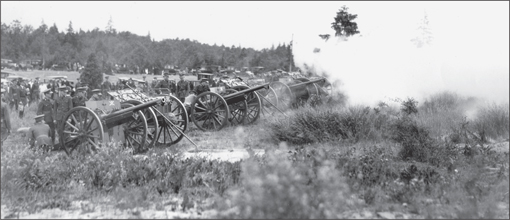
SEATTLE SALUTES HEROIC DEAD, MAY 30, 1928. Approximately 22,000 people crowded the North Trunk Highway to build a floral crest on the knoll, where 20 veterans of four wars are laid to rest in the corner of Washelli Cemetery, the “Arlington of the West.” At noon, four guns of Battery F, 146th Washington Field Artillery, commanded by Capt. Pearl Roundy, sounded a solemn martial note every five seconds until the national salute of 21 guns had been fired. The afternoon ceremonies began at 2:00 p.m., with members of all veterans organizations laying wreaths on the symbolic grave bearing a government headstone with an epitaph to the “Unknown Defenders of the Nation.” Judge Malcolm Douglas spoke on the noble, and Mrs. Douglas addressed the Gold Star Mothers. (Courtesy Evergreen-Washelli Cemetery.)

SECOND ANNUAL MEMORIAL DAY PROGRAM. This is the official Memorial Day program for Wednesday, May 30, 1928, at the Veterans Memorial Cemetery in Washelli Cemetery. (Courtesy Evergreen-Washelli Cemetery.)
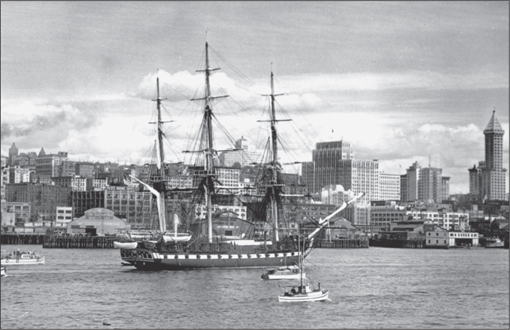
U.S. FRIGATE CONSTITUTION. Pictured May 1933 in Seattle, the U.S. frigate Constitution, famously known as “Old Ironsides,” is traversing Elliott Bay on a world tour. The vessel was launched in 1797 at Hartt’s Shipyard in Boston, Massachusetts. This gallant old ship had been restored to the condition she was in at the height of her brilliant career. (Courtesy Evergreen-Washelli Cemetery.)

BRIEF HISTORY OF “OLD IRONSIDES.” Rear Admiral Phillip Andrews, U.S. Navy, signed this brief history of “the ship that was a navy.” An International Maritime Heritage Award was given to the USS Constitution, presented to Comdr. David M. Cashman, U.S. Navy, the commanding officer, on December 17, 1987, by Pres. Ronald Reagan in the Oval Office of the White House, in Washington, D.C., to the commanding officer, Commander David M. Cashman, USN. Built in 1797, “Old Ironsides” was in the War of 1812 and is the world’s oldest commissioned warship afloat. (Courtesy Evergreen-Washelli Cemetery.)
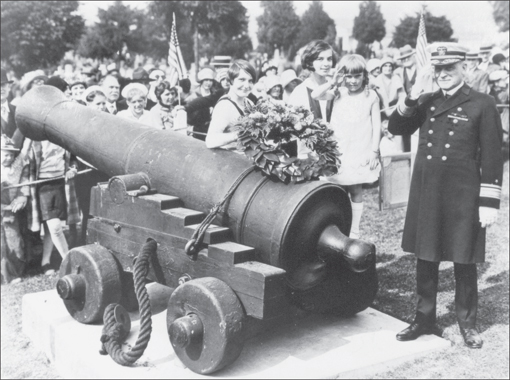
DEDICATION OF “OLD IRONSIDES” CANNONS. On Friday June 9, 1933, two 32-pound long-rifle cannons were dedicated to the “memory of those who lost their lives on ‘Old Ironsides’” by the officers and men of the U.S. frigate Constitution, which was then in Elliott Bay, Seattle, on a nationwide tour. Rose Mary Ziegemeier, age four, was helping her father, Rear Admiral H. J. Ziegemeier, dedicate a cannon at the Veterans Memorial Cemetery at Washelli. The guns were made of cast iron and were 10 feet, 9 1/8 inches long. The maximum outside diameter was 24 inches, and they each weighed 4,275 pounds. “Old Ironsides” fought in 42 naval engagements and won them all. These were grim relics of America’s first wooden navy. The guns that once echoed defiance to Great Britain now flank the walkway of the Veterans Memorial Cemetery chimes tower, silently watching over the veterans. (Courtesy Evergreen-Washelli Cemetery.)
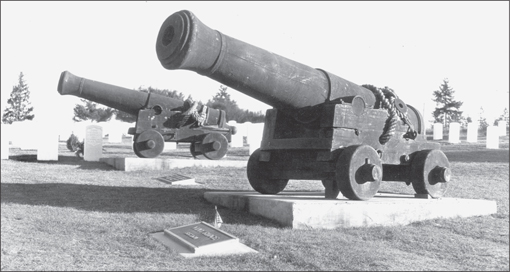
CANNONS FROM “OLD IRONSIDES.” This 1942 photograph shows the original heavy ropes as the cannons were set on display at the Veterans Memorial Cemetery in Washelli. These relics of the famous U.S. Navy warship arrived on the SS Dorothy Luckenback to be dedicated on May 30 during the Memorial Day ceremony at the Veterans Memorial Cemetery. The cannons had been replaced from the ship, as they were not part of the original 1797 armament. (Courtesy Evergreen-Washelli Cemetery.)
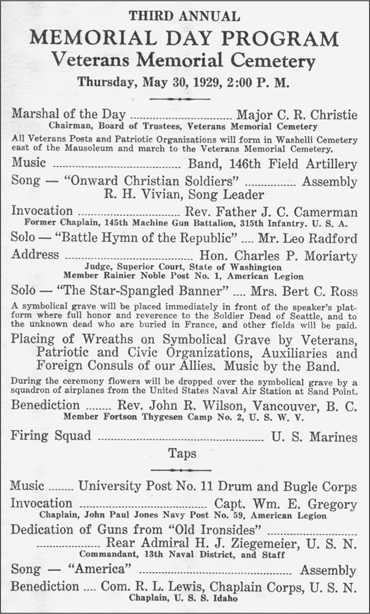
THIRD ANNUAL MEMORIAL DAY PROGRAM. This was the official Memorial Day program for Thursday, May 30, 1929, at the Veterans Memorial Cemetery in Washelli Cemetery. During the ceremony, flowers were dropped over the symbolic grave by a squadron of airplanes from the U.S. naval air station at Sand Point. (Courtesy Evergreen-Washelli Cemetery.)
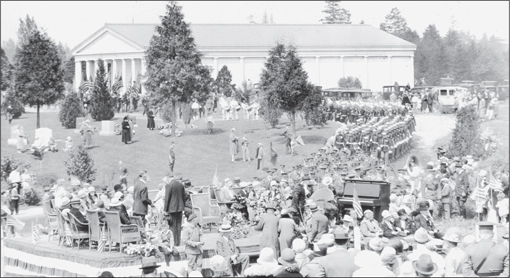
MEMORIAL DAY CELEBRATION. This 1929 photograph depicts a Memorial Day service with wicker chairs and a piano onstage. The Washelli Community Mausoleum in the background is surrounded by well-kept lawns, flowers, and shrubbery. The whole atmosphere is one of peace and comfort for the living, and tender respect for the dead. (Courtesy Evergreen-Washelli Cemetery.)

CHINESE COUNCIL PLACING FLOWERS. Around the late 1920s or early 1930s, the Chinese Council was placing flowers on the symbolic grave on Memorial Day in the Veterans Memorial Cemetery. The back of the photograph says, “Evergreen-Washelli Memorial Park Company.” (Courtesy Evergreen-Washelli Cemetery.)
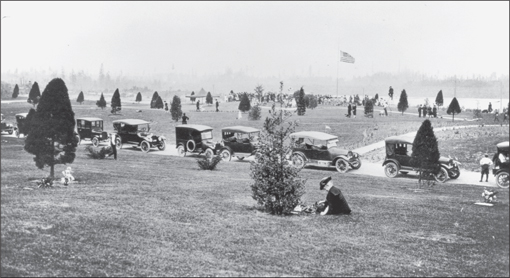
MOURNER AT GRAVE. On Memorial Day, May 30, 1928, an unidentified woman is pictured sitting graveside. (Courtesy Evergreen-Washelli Cemetery.)
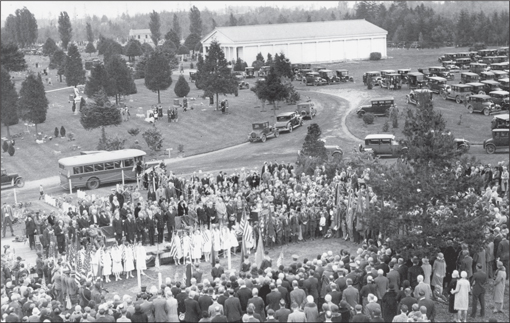
MEMORIAL DAY CELEBRATION, MAY 30, 1931. Thousands pay tribute to the nation’s heroes at Washelli in Veterans Memorial Cemetery. Preceding the program, a huge parade headed by flags of the United States and its allies, along with all of the colors of our veterans, marched and stopped at the symbolic grave before finishing at the speaker’s platform. Over 15,000 people attended, and the speeches were broadcast on KOMO. Rice W. Means, former national commander of both the Veterans of Foreign Wars and United Spanish War Veterans, was the principal speaker at this engagement paying tribute to our nation’s heroes. At high noon, local guardsmen shot off a 21-gun salute using a battery of war-scarred French “75s.” Music was provided by the 146th Field Artillery Band and the Seattle Pipe Band. (Courtesy Evergreen-Washelli Cemetery.)
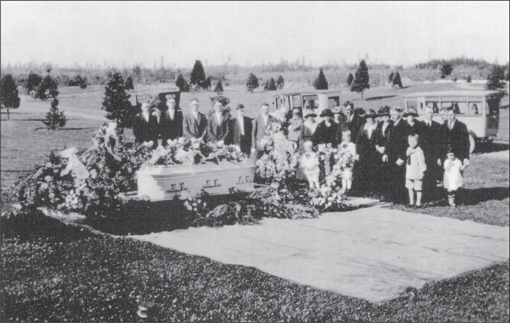
EARLY FUNERAL. This unidentified family poses for the camera at an early funeral (around the 1920s or 1930s) in Evergreen Memorial Park. Note the heavily adorned casket and the ornate flowers surrounding the casket. (Courtesy Evergreen-Washelli Cemetery.)
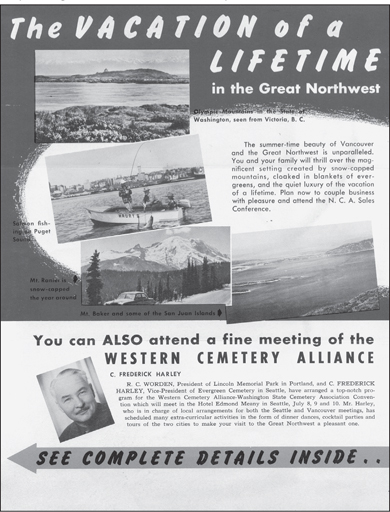
THE VACATION OF A LIFETIME. “The summer-time beauty of Vancouver and the Great Northwest is unparalleled. You and your family will thrill over the magnificent setting created by snow-capped mountains, cloaked in blankets of evergreens, and the quiet luxury of the vacation of a lifetime.” (Courtesy Evergreen-Washelli Cemetery.)
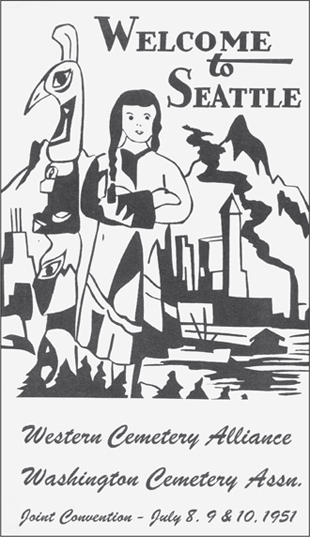
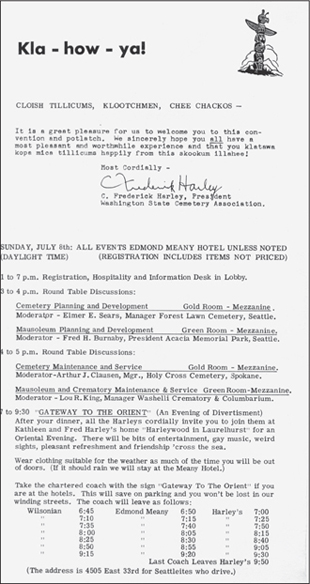
WELCOME TO SEATTLE. Here is a Western Cemetery Alliance advertisement for a joint convention dated July 8, 9, and 10, 1951. C. Fredrick Harley, president of the Washington State Cemetery Association, welcomed them: “Kla-how-ya! Cloish Tillicums, Klootchmen, chee Chakos. It is a great pleasure for us to welcome you to this convention and potlatch. We sincerely hope you all have a most pleasant and worthwhile experience and that you klatawa kopa mica tillicums happily from this skookum illahee!” Most events were held at the Meany Hotel. On Tuesday after dinner, the attendees were invited by all of the Harleys to join them at Kathleen and Fred Harley’s home, Harleywood, in Laurelhurst for an “Oriental Evening.” (Courtesy Evergreen-Washelli Cemetery.)
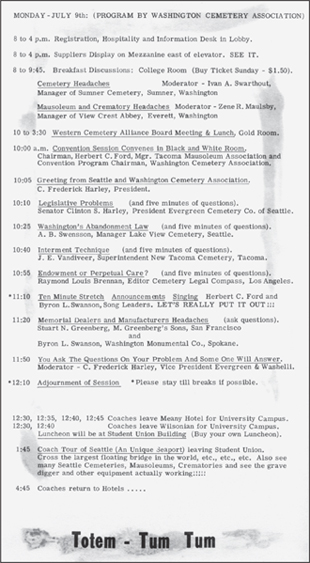
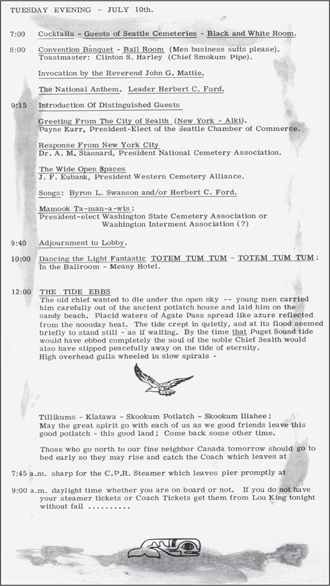
WELCOME TO SEATTLE (CONTINUED). The invitation said, “Monday evening July 9, all people with cars are asked to load up at Meany or Wilsonson to take conventioneers to the pier for the cruise. The Steamer, Sightseer, leaves the pier at Show Boat Theatre on campus for a cruise thru Lake Union, the Canal, the Locks, across Puget Sound to Agate Pass, past the burial place of Chief Sealth, under the new bridge joining Bainbridge Island to the Olympic Peninsula and thru the Narrows to Laura and Clint Harley’s summer home. A fine salmon dinner, included in your registration or Cruise Ticket, will be served on board the ‘Sightseer.’ ” (Courtesy Evergreen-Washelli Cemetery.)
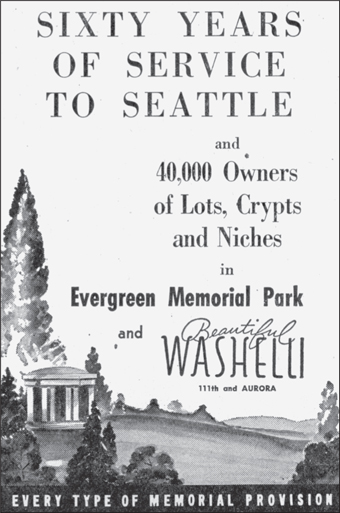
ADVERTISEMENT. This advertisement for Evergreen Memorial Park and Washelli Cemetery boasts 60 years of service to Seattle. At that time, there were 40,000 owners of lots, crypts, and niches. (Courtesy Evergreen-Washelli Cemetery.)
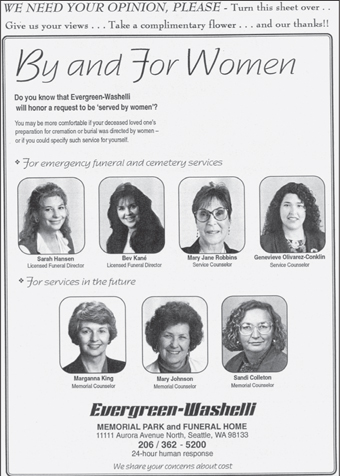
EVERGREEN-WASHELLI ADVERTISEMENT. This Evergreen-Washelli advertisement, “By and For Women,” pointed out that if one wished to be “served by women” in preparing a body for burial, that could be arranged at the funeral home. Note the promise to provide a “24-hour human response” at the bottom of the scan. (Courtesy Evergreen-Washelli Cemetery.)
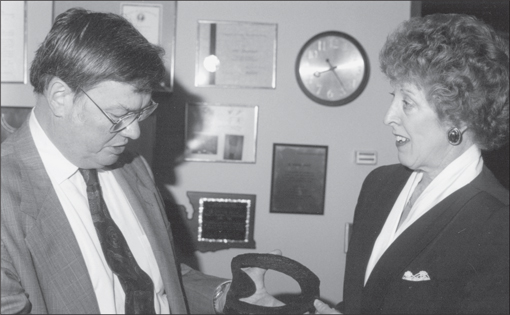
EVERGREEN-WASHELLI UNEARTHS RELICS. Dave Daly and Marylou Evans inspect an old horseshoe found at Evergreen Washelli Cemetery in the top photograph. In the photograph below are two unidentified men with two draft horses. The horseshoe that was found was an old cast-iron type that was worn by a heavy draft horse like those pictured below. In 1884, when the cemetery was founded, they built a barn for the horses. As part of the sexton’s job he fed the horses. The barn remained in use as an equipment shed until it was demolished in the late 1950s. Half of all of the land at Evergreen-Washelli was cleared by man and horse teams. Evergreen-Washelli has old 16mm film showing horse teams clearing the cemetery and at one time had plans for restoring them. (Courtesy Evergreen-Washelli Cemetery.)
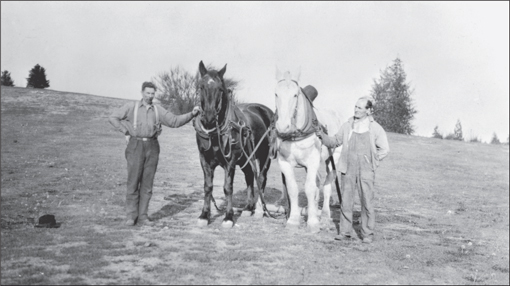
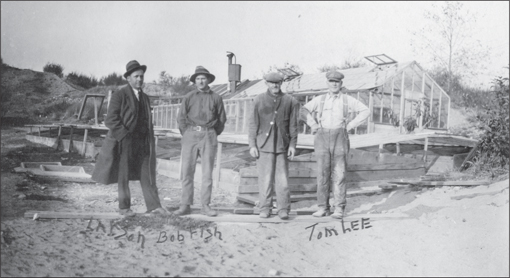
GREENHOUSE AT EVERGREEN MEMORIAL PARK. This old photograph shows the original greenhouse behind Evergreen Memorial Park. Pictured from left to right are Larson, Bob Fish, unidentified, and Tom Lee. The greenhouse has been demolished. (Courtesy Evergreen-Washelli Cemetery.)

THE 23RD PSALM. “A Psalm of David: The Lord is my shepherd; I shall not want. He maketh me to lie down in green pastures: he leadeth me beside the still waters. He restoreth my soul: he leadeth me in the paths of righteousness for his name’s sake. Yea, though I walk through the valley of the shadow of death, I will fear no evil: for thou art with me.” (Courtesy Evergreen-Washelli Cemetery.)
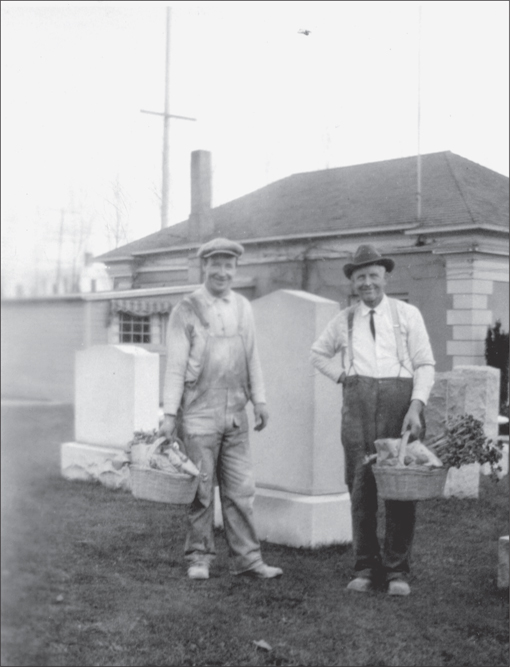
EVERGREEN-WASHELLI THANKSGIVING BASKETS. This article ran in the Tribune Review on December 6, 1929: “D. D. Graves, one of the fifty employees of Evergreen Cemetery Company, smiles with satisfaction as he displays the contents of the Thanksgiving basket presented to him by C. S. Harley. Thanksgiving is a big day for employees of Evergreen Cemetery Company, owners and operators of Evergreen Memorial Park and Washelli Cemetery. For the past four years Mr. Harley, president, has given each employee a well-filled basket, including everything ‘from soup to nuts’ as an expression of his appreciation of their loyalty.” (Courtesy Evergreen-Washelli Cemetery.)
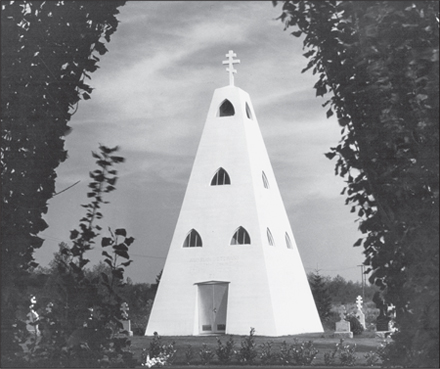
RUSSIAN CEMETERY CHAPEL. This monument in honor of Russian War veterans was photographed on August 30, 1936. The historic Russian Chapel is shown framed by the famous poplars at Washelli Cemetery. In 2006, the St. Nicholas Russian Orthodox Cathedral collected donations for a new coat of paint. (Courtesy Evergreen-Washelli Cemetery.)
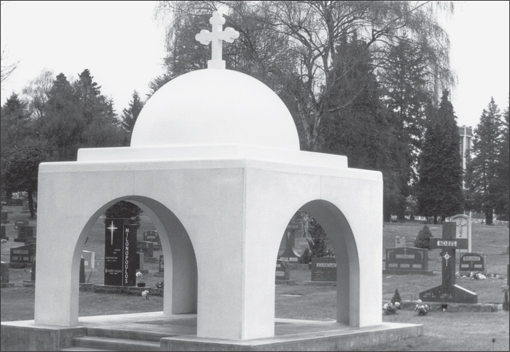
GREEK ORTHODOX CHAPEL. This chapel was built over six graves and in memory of the Reverend Dr. A. Homer Demopulos Protopresbyter, beloved pastor and shepherd of St. Demetrios Church (1968–1993). “Let your light so shine before men, that they may see your good works and glorify your father which is in heaven.” —Matthew 5:16. (Courtesy Evergreen-Washelli Cemetery.)
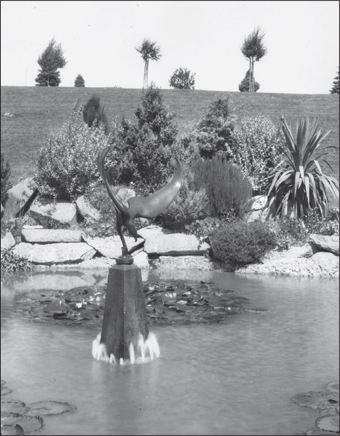
LA GAVIOTA. This sculpture memorializing Fredrick Potter Harley, the son of Clinton and Laura Harley, is named La Gaviota: a bronze gull that sits within a reflective pond. The sculptor of La Gaviota was Dudley Pratt. (Courtesy Evergreen-Washelli Cemetery.)
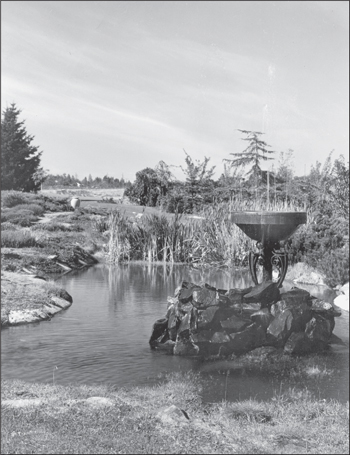
MEMORY GLEN. This photograph of Memory Glen was taken by Loren Smith of Seattle. Centered in the Memory Glen section of the cemetery, ground burial for urns was instituted in 1933. Cremation was rare at the beginning of the century but has become more prevalent in recent years. (Courtesy Evergreen-Washelli Cemetery.)
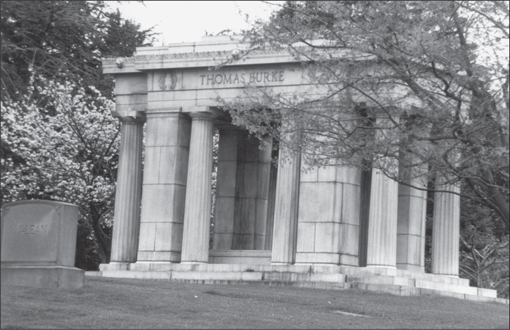
THOMAS BURKE MEMORIAL. Burke (1849–1925) was born in Chateauguay, New York, and was of Irish descent. He was a probate judge in Washington from 1876 to 1880 and was a justice of Washington Territorial Supreme Court in 1888. He married Caroline McGilvra in 1879. Burke collapsed while speaking at the Carnegie Endowment in New York. Dr. Butler, president of Columbia University, caught him as he fell. Butler stated that Burke died “in the midst of an eloquent and unfinished sentence which expressed the high ideals of international conduct.” (Courtesy Evergreen-Washelli Cemetery.)
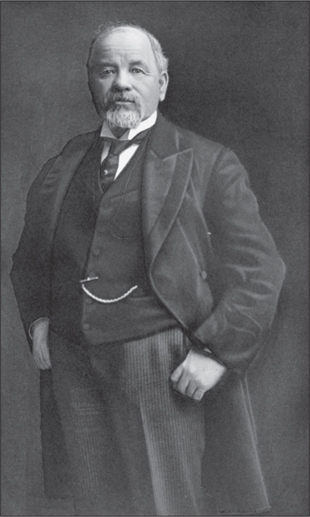
THOMAS BURKE. Burke is known as the “Man Who Built Seattle.” He came to the city in 1875. Besides his interests in the law, he promoted the railroad, pushed for higher education, and was a great civic leader. Burke was influential in promoting racial tolerance during the anti-Chinese riots of February 1886. The Burke-Gilman Trail and the Burke Museum are named for him. (Courtesy Clarence Bagley.)

HENRY LANDES MEMORIAL. Landes, dean of the College of Science (1895–1936) became the head of the geology department at the University of Washington (UW). He taught physiology, a course in terrestrial physics, and geography at UW, and he served as state geologist from 1901 to 1921. In 1905, Landes wrote field notes of Mount Rainier. He married Bertha Knight Landes (1868–1943), who was the first female executive of a major city. (Courtesy Evergreen-Washelli Cemetery.)
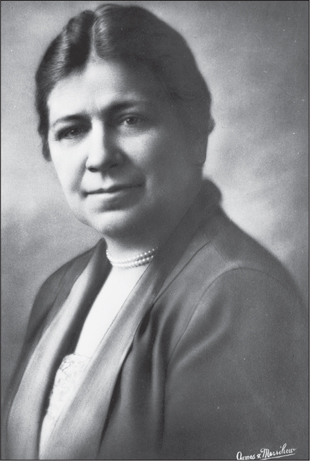
BERTHA KNIGHT LANDES. Landes was the first female mayor of Seattle, from 1926 to 1928. When she ran for city council, her husband said, “It’s simply the natural enlargement of her sphere. Keeping house and raising a family are woman’s logical tasks, and in principle, there’s no difference between running one home and a hundred thousand.” Landes is purported to haunt the Harvard Exit Theatre on Capital Hill. (Courtesy Seattle Municipal Archives, No. 12285.)
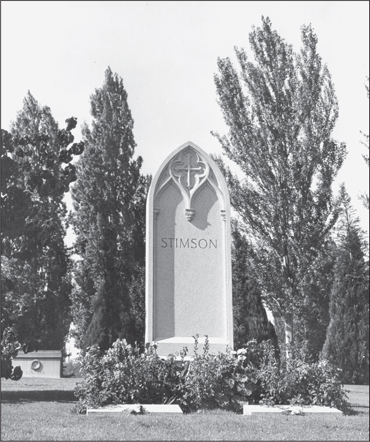
C. D. STIMSON MONUMENT. Stimson (1827–1928) built the Stimson Lumber Company on Salmon Bay in Ballard. His wife was Harriett Overton Stimson (1862–1936), who was founder of the Seattle Symphony, Children’s Orthopedic Hospital, and the Visiting Nurse Service and who donated a large sum of money to the Cornish school. (Courtesy Evergreen-Washelli Cemetery.)
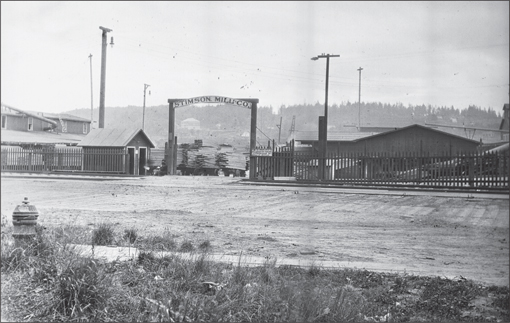
STIMSON MILL COMPANY. This photograph, dated October 12, 1915, shows the main entrance to the Stimson Mill Company’s plant. Stimson and his wife, Harriett, and his son Thomas moved to Seattle in 1889. He soon established Stimson Mill Company, with his brothers and father as directors. On June 6, 1889, the great Seattle fire created an immediate demand for the mill’s products. (Courtesy Seattle Municipal Archives, No. 51925.)

STIMSON MANSION. This 1901 photograph shows the Stimson Mansion, built by C. D. and Harriett Stimson. The mansion is now called the Stimson-Green Mansion, is located at 1204 Minor Avenue on First Hill, has been fully restored, and is available for weddings and other events. The mansion is an example of “eclectic architecture.” (Courtesy the Washington Trust for Historic Preservation.)
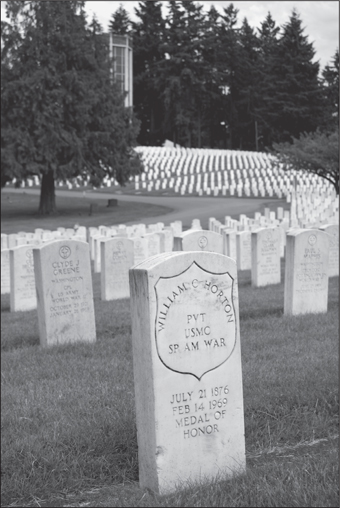
WILLIAM C. HORTON MARKER. Horton (1876–1969) received the Congressional Medal of Honor during the Boxer Rebellion as a private in the U.S. Marine Corps. His citation reads, “In action against the enemy at Peking, China, 21 July to 17 August 1900. Although under heavy fire from the enemy, Horton assisted in the erection of barricades.”
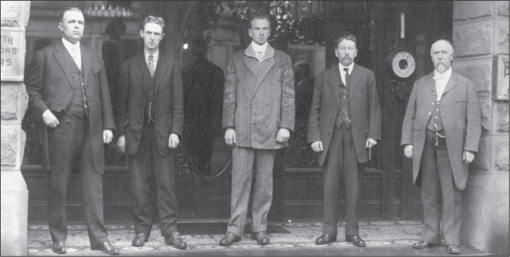
BUTTERWORTH FAMILY, C. 1919. Shown here from left to right are G. M. Butterworth, Ben Butterworth, Fred Ray Butterworth (December 25, 1877–August 3, 1929), Charley Butterworth, and founder Edgar Ray Butterworth. E. R.’s fifth son, Harry Edgar Butterworth (September 1, 1889–May 19, 1913), had died by the time this picture was taken. (Courtesy Bert Butterworth Jr.)
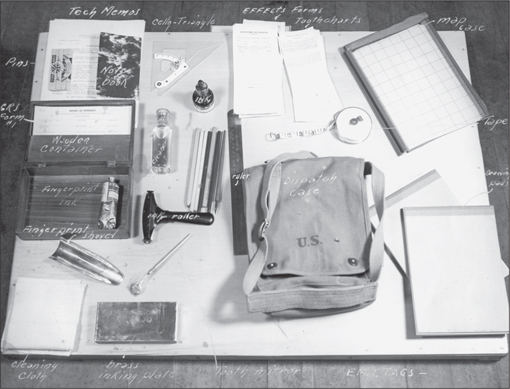
IDENTITY KIT FOR UNKNOWN SOLDIERS. This kit was developed for field use in identifying unknown dead for World War II. Note the shovel for fingerprinting, which could be rotated on the finger instead of attempting to rotate the finger. These shovels assured a good print. (Courtesy Bert Butterworth Jr.)
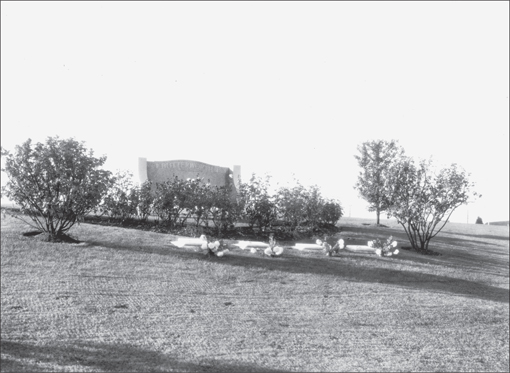
BUTTERWORTH MEMORIAL BENCH. Edgar Ray Butterworth (1847–1921) was hired in 1889 to run Cross Undertaking (in the 1600 block of Front Street) and bought it out in 1892, renaming it E. R. Butterworth and Sons. Fred was born December 25, 1877, in Mule Creek, Kansas. He moved with his father as an infant to Centerville (now Centralia) in the late 1870s and moved to Seattle when his father was hired to run Cross Undertaking. Edgar Ray was buried at Mount Pleasant originally, then disinterred, and reburied at Evergreen on July 6, 1922. (Courtesy Evergreen-Washelli Cemetery.)

WASHELLI MAUSOLEUM. Described in this promotional pamphlet, Washelli Mausoleum built in 1921, was a “palace of granite, marble and bronze making it as secure and time resisting as the pyramids of Egypt. If you would give your loved ones the same precious privilege you must act at once before it is too late.” (Courtesy Evergreen-Washelli Cemetery.)
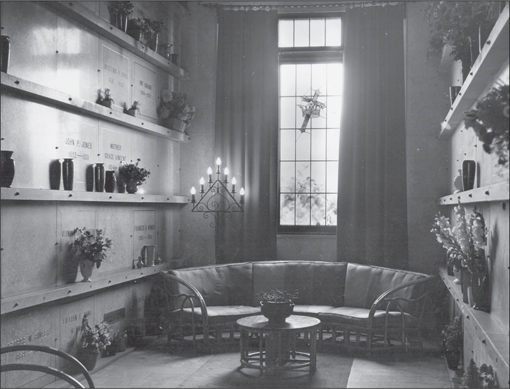
INTERIOR VIEW OF WASHELLI MAUSOLEUM. This c. 1930 photograph shows the elaborate interior of the Washelli Mausoleum. An advertisement said, “Over 400 leading families of Seattle and vicinity have chosen this everlasting building as their final resting place.” (Courtesy Evergreen-Washelli Cemetery.)

INTERIOR VIEWS OF WASHELLI MAUSOLEUM. These early photographs show a beautiful resting place, a permanent memorial (above), and the family crypt section (below). The promotional pamphlet states, “The interior is finished throughout with beautiful marble of contrasting shades, lending the soft colors necessary to relieve the snow white of the building. That is one of the reasons it attracts such admiration from all beholders. It provides a place where family and friends may lie side by side, high and above ground where neither water, damp nor mold can enter.” (Courtesy Evergreen-Washelli Cemetery.)
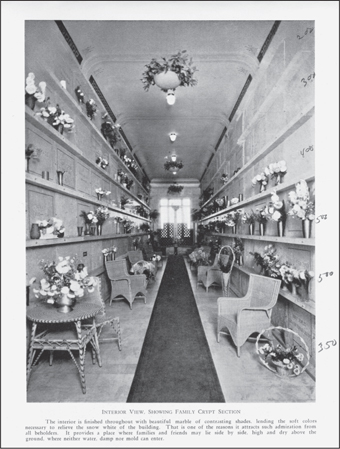
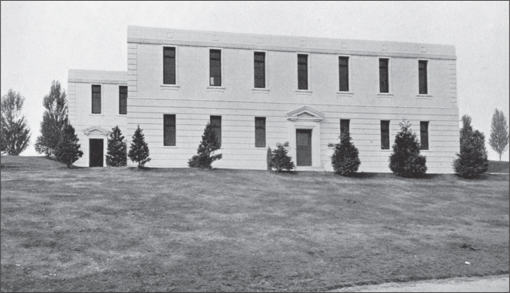
ROSE HILL MAUSOLEUM. This is an exterior view of Rose Hill Mausoleum, which is also located at beautiful Washelli Cemetery. As the Washelli Mausoleum proved to be so popular and the space was filled, Rose Hill Mausoleum was opened with a limited number of crypts. (Courtesy Evergreen-Washelli Cemetery.)
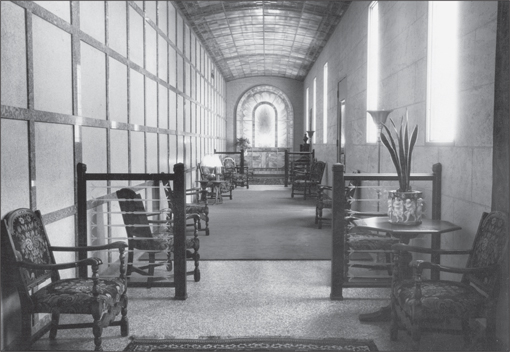
ROSE HILL MAUSOLEUM. This c. 1929 photograph shows the interior of the Rose Hill Mausoleum. An advertisement claimed, “It will be to the advantage of everyone interested in Mausoleum entombment to investigate before all of these moderately priced crypts are disposed of.” (Courtesy Evergreen-Washelli Cemetery.)
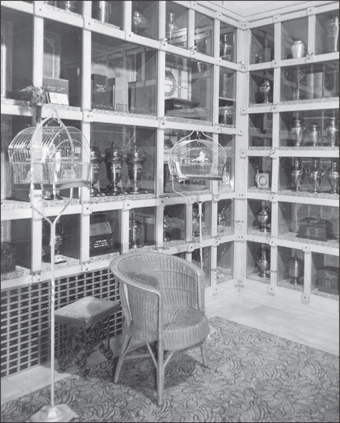
BRONZE ROOM. This photograph was taken by Tackett Studio of Seattle and shows the Bronze Room. An advertisement said, “The niches for urns are sold outright on easy terms.” It goes on to say, “A certificate of ownership is issued on every sale, and the first cost is the only cost.” (Courtesy Evergreen-Washelli Cemetery.)
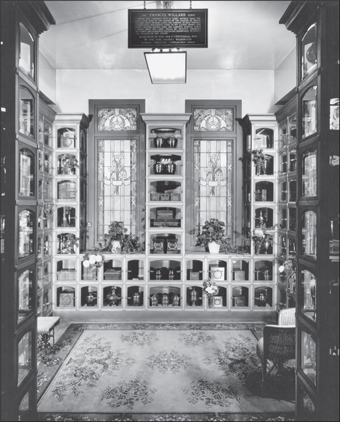
FRANCIS WILLARD COVE. This photograph shows the Francis Willard Cove in the columbarium. One advertisement described the “Columbarium rooms, in which rest the incinerated remains of the dead are beautiful, comforting and restful. The daylight through the windows is softened by tinted art glass.” (Courtesy Evergreen-Washelli Cemetery.)


WASHELLI CREMATORY AND COLUMBARIUM. The photograph above shows the wonderful architecture of the Washelli crematory and columbarium as they looked in 1921. An advertisement said, “A solid concrete construction, reinforced with steel, renders this building thoroughly fireproof. The exterior is a beautiful cream white terra-cotta and the interior is pleasing in every detail.” In the photograph below is the same building after 1960, the remodel, showing the pneumatic hoist in front of the steps. The pneumatic hoist was used to lift bodies from the street level, where they were delivered by hearse up to the top step for easy entry into the crematory building. (Courtesy Evergreen-Washelli Cemetery.)